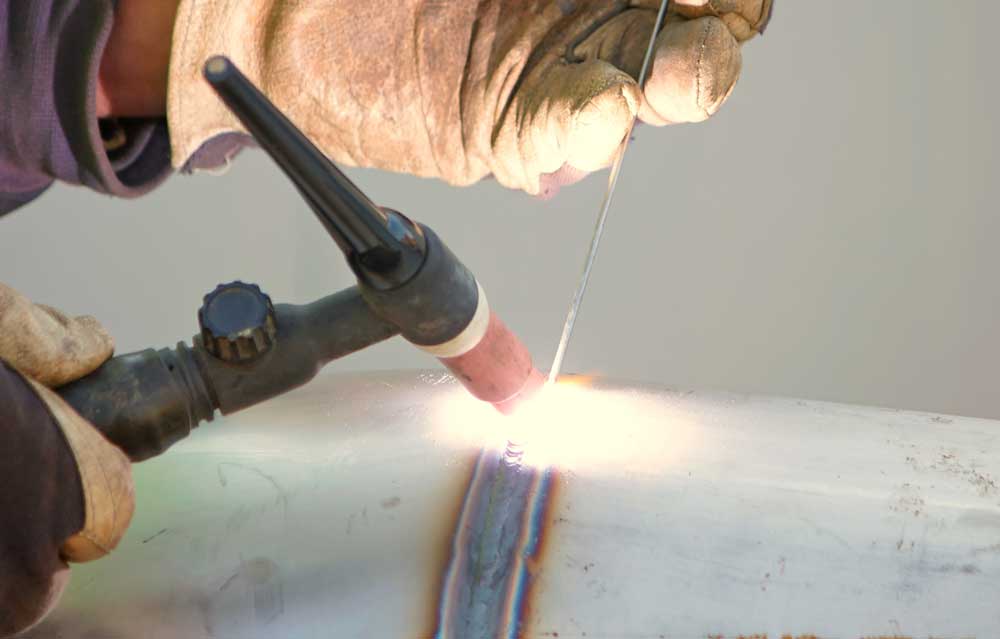
Weldall offers tungsten inert gas (TIG) welding services. Our experienced welders use this technique to weld thin sections of stainless steel and non-ferrous metals such as aluminum, magnesium, and copper alloys. Manual gas tungsten arc welding is considered the most difficult of all the welding processes requiring careful attention and expert welding skills to prevent contact between the electrode and the workpiece.
TIG Welder Features:
- Allows for welding of thin material.
- Better penetration.
- Pinpoint control results in a thin, tight seam weld which is visually cleaner and aesthetically pleasing.
- No odor, no fumes, no slag results in the welder having an un-obscured view of the weld area and maximum visibility of the arc resulting in exceptional precision.
- They pose no odor and are transparent, permitting the the welder .
- Less clean-up. TIG is a spark-free welding technique which eliminates contaminants in the metal and molten globules of spatter.
- Welds more metals and metal alloys than any other arc welding process.
- GTAW gives very good results when welding dissimilar metals in the flat position.
TIG Welding Process:
Tungsten Inert Gas (TIG) welding is a welding method where an electric arc is maintained between a non-consumable tungsten electrode and the part to be welded. The TIG or GTAW torch feeds inert gas, such as Argon or Helium, to serve as a barrier between the weld and contaminants that may be present in the surrounding air.
